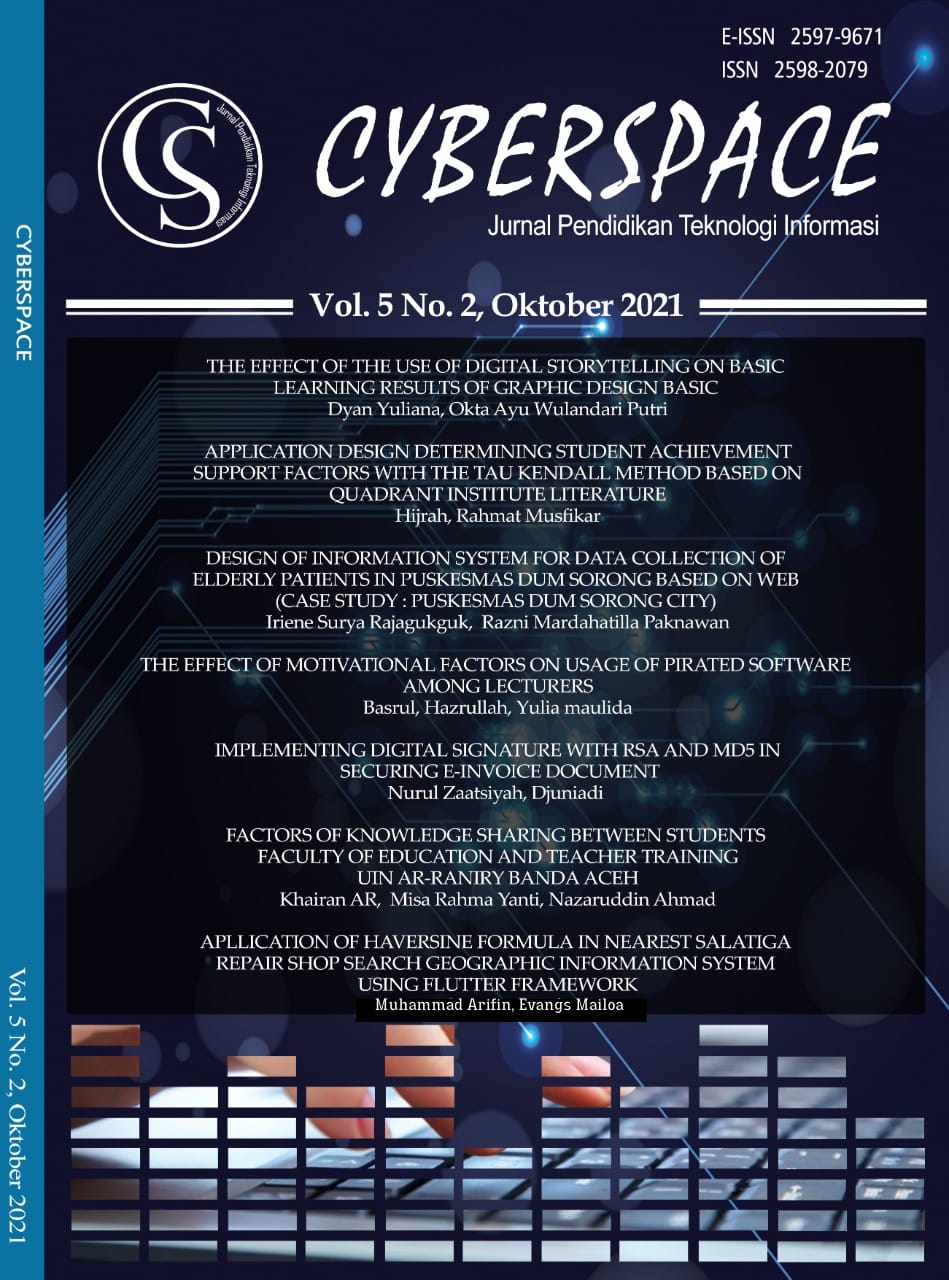References
Nunu Mahnun, “Peranan Media Pembelajaran Dalam Meningkatkan Minat Belajar Mahasiswa,” J. Komun. Pendidik., vol. 2, no. 2, p. 103, 2012, doi: 10.32585/jkp.v2i2.113.
Yudiantara, “Pengembangan Media Pembelajaran Berbasis Multimedia Pada Mata Kuliah Kompetensi Pembelajaran Pokok Materi Keterampilan Dasar Mengajar,” J. Pendidik. Tek. Sipil, vol. 8, no. 1, pp. 24–30, 2015.
Frazel, “PENERAPAN DIGITAL STORYTELLING DALAM PEMBELAJARAN BAHASA metode pengajaran dengan memanfaatkan komputer dan internet . Salah satu metode yang,” no. September 2017, 2010.
Miller, “DIGITAL STORYTELLING UNTUK MENGEMBANGKAN ASPEK SPIRITUAL ANAK TAMAN KANAK-KANAK ( TK ) AL-HIDAYAH BAKUNG 01 KABUPATEN BLITAR,” no. september, 2011.
Nursalam, “Journal of Telenursing,” vol. 1, pp. 67–79, 2013.
Rosidatun, “STORYTELLING DENGAN MEDIA BUKU KOSAKATA,” no. September, pp. 20–21, 2018.
Dewi, “Berbahasa Pada Anak Prasekolah,” Pros. Semin. Nas. Call Pap., pp. 36–44, 2011, [Online]. Available: http://fppsi.um.ac.id/wp-content/uploads/2019/07/5-STORYTELLING-SEBAGAI-METODE-DALAM-MENGEMBANGKAN-KEMAMPUAN-BERBAHASA-PADA-ANAK-PRASEKOLAH-36-44.pdf.
Sudijono, “Faktor-Faktor Yang Mempengaruhi Hasil Belajar Siswa Pada Pembelajaran Praktik Kelistrikan Otomotif Smk Di Kota Yogyakarta,” J. Pendidik. Vokasi, vol. 6, no. 1, p. 111, 2012, doi: 10.21831/jpv.v6i1.8118.
Sugiyono, “Halus Pada Anak Kelompok A Di TK Hidayatullah Lidah Kulon Surabaya,” pp. 3–6, 2015.
Sugiyono, “Pengaruh Harga Jual Kaca Patri Jenis Silver Terhadap Nilai Penjualan Pada Cv. Karunia Kaca Palembang Tahun 2004-2015,” J. Ecoment Glob., vol. 2, no. 2, p. 49, 2014, doi: 10.35908/jeg.v2i2.251.
Yunus, “FAKULTAS PSIKOLOGI MEDAN,” 2016.
Arikunto, “Proportional Stratified Random Sample,” Dict. Stat. Methodol., vol. 02, no. 01, 2013, doi: 10.4135/9781412983907.n1534.
Trianto, “Pemanfaatan Digital Storytelling sebagai Media Pembelajaran Tematik di SD,” Springer Ser. Cult. Comput., pp. 547–558, 2010.
Sundayana, “Metode Penelitian Metode Penelitian,” vol. 2, pp. 22–34, 2014.



